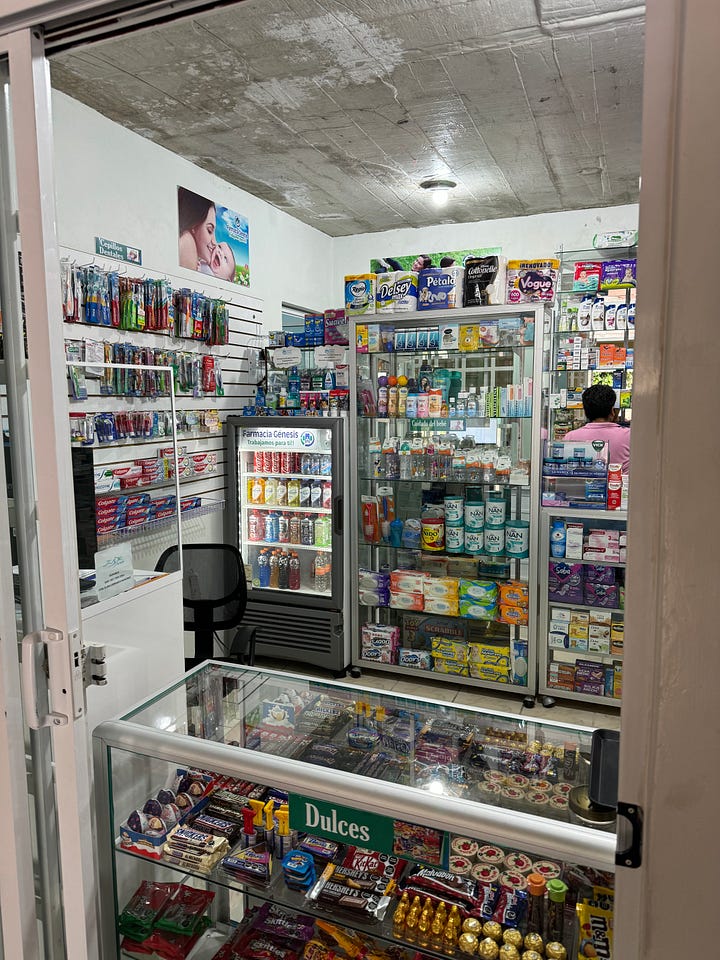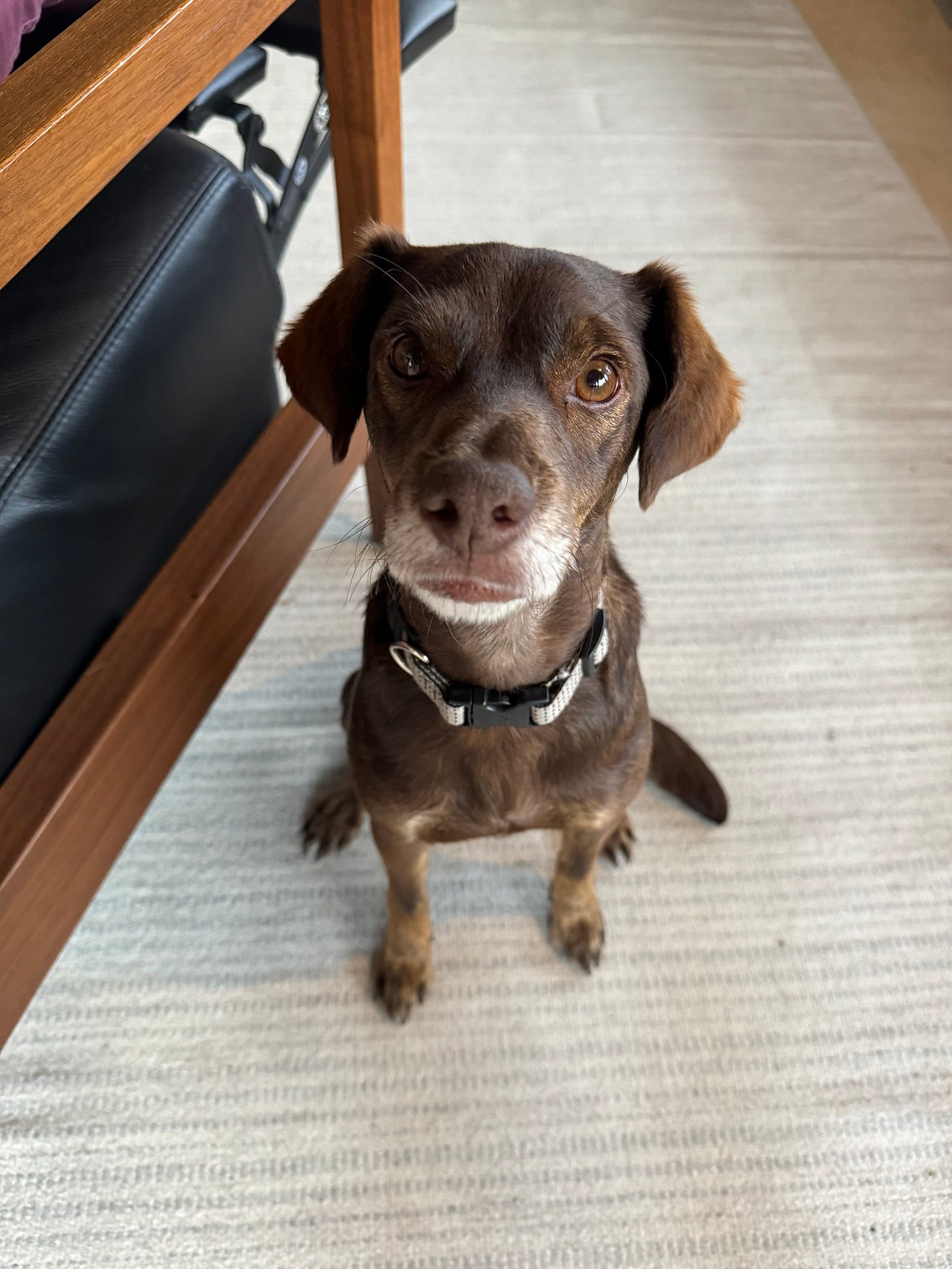A Visit to the Doctor in Mexico
A visit to our neighborhood doctor, Dr. Elias, says a lot about Mexican medicine.
I wasn’t overly concerned when I started to develop a cold in the week leading up to our first trip back to New York City since we moved to Oaxaca. When my symptoms refused to let up and I developed a deep, phlegmy cough I attributed it to switching from the parched, blazing, high altitude heat of dry season Oaxaca to the clinging damp of early spring in New York City. But when my symptoms hung on for two full weeks and the people I coughed around in public began to look at me like I was a plague carrying medieval peasant, I knew it was time to go see our local doctor.
As befits a small town, San Agustín Etla has a resident sawbones, an amiable Mexican man named Dr. Elias. His practice, Clinica San Agustín, sits about a quarter of the way up the large, winding hill that leads to the neighborhood Vista Hermosa (“Beautiful View”). Were we to walk to his office the trip would take all of ten minutes, but driving provides a good excuse to then head further up the hill to one of our favorite restaurants, Frida Libre.
When we first were considering a move to Mexico we had a lot of questions and concerns about the quality of medical care we might receive. People in the United States, even those who live close to the border (or perhaps especially those in close proximity to Mexico) seem to have very little understanding of what life is actually like within the interior of the country. Mexico is looked at, and often portrayed, as being entirely lawless, backwards, and unsafe. Millions of people genuinely believe that all of the ills of the generally dangerous, cartel-damaged borderlands Mexico shares with the United States are spread across the width and breadth of an entire country. Mexico, it’s thought, is the kind of place where you’d seek real medical care only as a last resort.
We knew simply from visiting Mexico that the stereotypes don’t hold up. Besides, while it’s true great swaths of Mexico are rural and poor, well, so are huge segments of the United States.
When we were living in Montana during the fall and early winter of 2017 our time there overlapped with one of the worst forest fire seasons in the state’s recorded history. Every day was worse than the last, with ash falling from the sky and the air tainted by the thick, gritty smell and taste of carbonized wood. Increasingly unable to breath and desperate to refill my asthma inhaler, which typically I’d only use during emergencies, I called up the local hospital to try to make an appointment with a pulmonologist.
“Hi,” I said to the person manning the hospital switchboard. “Could you please connect me to a pulmonologist? I’d like to make an appointment.”
There was a pregnant pause on the other end of the phone, and after several seconds of silence the voice responded, “well, I don’t know what that is. But how about a cardiologist?”
This was a bad sign. “A pulmonologist is a doctor who specializes in lungs and breathing,” I said with uncharacteristic patience. There was another pause. “Well, I’m afraid we don’t have anything like that here,” the voice said. It seemed unlikely the hospital didn’t have a single person specializing in an organ that can only be described as vital, but you reach a point, sometimes, when you simply cannot argue, explain, or brute force your way through someone’s unstoppable ignorance, and so I simply hung up and went to talk to Andrea.
Andrea was not thrilled by this turn of events, but she was also not surprised. She informed me that Marcus Daly Memorial Health (now known as Bitterroot Health) was, previously, more often than not referred to as “Carcass Daily.” So while we had serious questions about the quality of the medical care we’d receive in Mexico, we moved with the knowledge that it couldn’t be any worse than what we had already personally encountered in the United States.
Clinica San Agustín is a small, white rectangle of a building with two parking spots, a small waiting room with a reception desk, several chairs and some wooden benches, and an on-site pharmacy that in addition to carrying medication also has a robust selection of miscellanea, including condoms, Gatorade, toothbrushes, shampoo, deodorant, toilet paper, and a truly stellar assortment of both Mexican and American candy.


Balding and darker skinned, Dr. Elias dresses in slacks and a button down shirt, foregoing the white coat, scrubs, or other more formal clothing that some doctors in Mexico opt for. He also has a welcoming, centered, and authoritative air about him, appropriate for someone who has an all-ages family practice. I get the sense he’s probably seen just about every problem that could possibly come up, and when you describe whatever your current malady is he always seems slightly unsurprised as if ah, yes, that will happen sometimes. I get the feeling that if I were to hop into his office on one foot after having accidentally lost a foot in a gristly accident he’d look at my abruptly shortened leg and say, yes, I’ve heard about this happening to people.
Incredibly, Dr. Elias also always seems to be running about five minutes ahead of schedule, although it’s hard to say whether that’s his standard operating procedure or if my rather loose work day schedule simply makes me better able to come in during his less-busy moments. Because of this I was looking up how to say “I have a bad cough” on my phone when he walked into the waiting room and said my name. After greeting me with a smile he led me down a short corridor into his office.
I found myself in a rectangular space doing double duty as both an office and an examination room. In the center sat Dr. Elias’ desk and a large, aerodynamically-designed office chair resembling what you’d find in the cockpit of a race car, the kind of chair most often used by competitive video gamers who live stream themselves shooting friends and strangers in the face. Perhaps, I thought, it’s the clean lines and high performance mesh of the doctor’s chair which has him running perpetually ahead of schedule, shaving valuable seconds off of every movement by cutting down on wind resistance.
The office otherwise didn’t have much ornamentation. The examination table was pushed up against a wall and was short, at a height a child could easily manage. On the walls of the office were posters, which, in Spanish, addressed the importance of regular pediatric checkups. I couldn’t help but notice that the posters, clearly provided to him by some government organization, exclusively featured children who were white.
The examination was brief and identical to what I would have received in the United States. My ears, nose, and throat were all clear from signs of bacterial infection. A stethoscope was used to listen to my lungs and the verdict was they were inflamed, but without any signs of any particularly dramatic malady. I had bronchitis resulting from a virus, and in the absence of a bacterial infection all that was left to be done was to regularly coat my innards with anti-mucus medication (to help with bronchial inflammation) and wait for the problem to resolve. Dr. Elias handed me a prescription bearing his signature and the names of some over-the-counter medications and told me to come back if the symptoms didn’t improve.
Standing at the counter of the pharmacy inside of his office, I debated sampling some of the local candies and ultimately decided against it. Soon the pharmacist behind the counter came back with the two medications that had been prescribed.
“Cuál es el precio?” I asked. She told me the total was 520 pesos.
I thought there had to be a mistake. “Es este precio con la cita con el doctor?”
“Sí,” the pharmacist replied. My two medications, with the cost of the doctor’s visit, came to $30.57.
It’s hard to say my experience was entirely representative of the state of Mexican medicine, or even what medical care is generally like in Oaxaca. But it was cheaper, faster, and more personable than most of the care I’ve received in my lifetime in the United States, and at least this medical practice knew about the importance of being able to breath.
I paid in cash and would have skipped out, had my lungs allowed it.





I laughed when I got to the end of this story because I had an almost identical experience in Japan -- caught a cold, had a lingering phlegmy cough, procrastinated more than I should have on seeking medical attention, finally went, received maybe 5 different prescription medications, and was bracing myself to receive the final bill which turned out to be just about....30USD. Unfortunately no candy counter at the place I went, but a good beverage selection in the vending machines.
Over the years we’ve had some very unique experiences with the MX medical system, in QRoo, Cancun and pueblo Puerto Morelos. And not in a good way. I do caution that for anything at all serious, US medical, disregarding of course MT ): is suggested. Just one snafu—for a tetanus shot they brought out the wrong medicine on , literally, a pillow and the injection capsule on top. I read it and said in Spanish that’s not tetanus. She went back. Second try no better. Her superior, man in white coat who may have been a dr, came out and said to her, not realizing I spoke Spanish, “What do the Royals want?” I said in Spanish, “tetanos.” He acted peeved. After 1-1/2 hours of the waiting game we left, went to farmacia, bought it ourselves over the counter plus syringe and went to another hospital and asked to have a nurse administer. The medicine was 3USD. The injection maybe $10, and deed done. This one is kinda funny, other times, not so much. They are great overall on X-rays, MRIs. But a dermatologist didn’t wear gloves and I had contracted something from my cat later found out as enroute overseas stopped at dermatologist in US, she said I had contracted scabies! US dr said a first year medical student knows that.